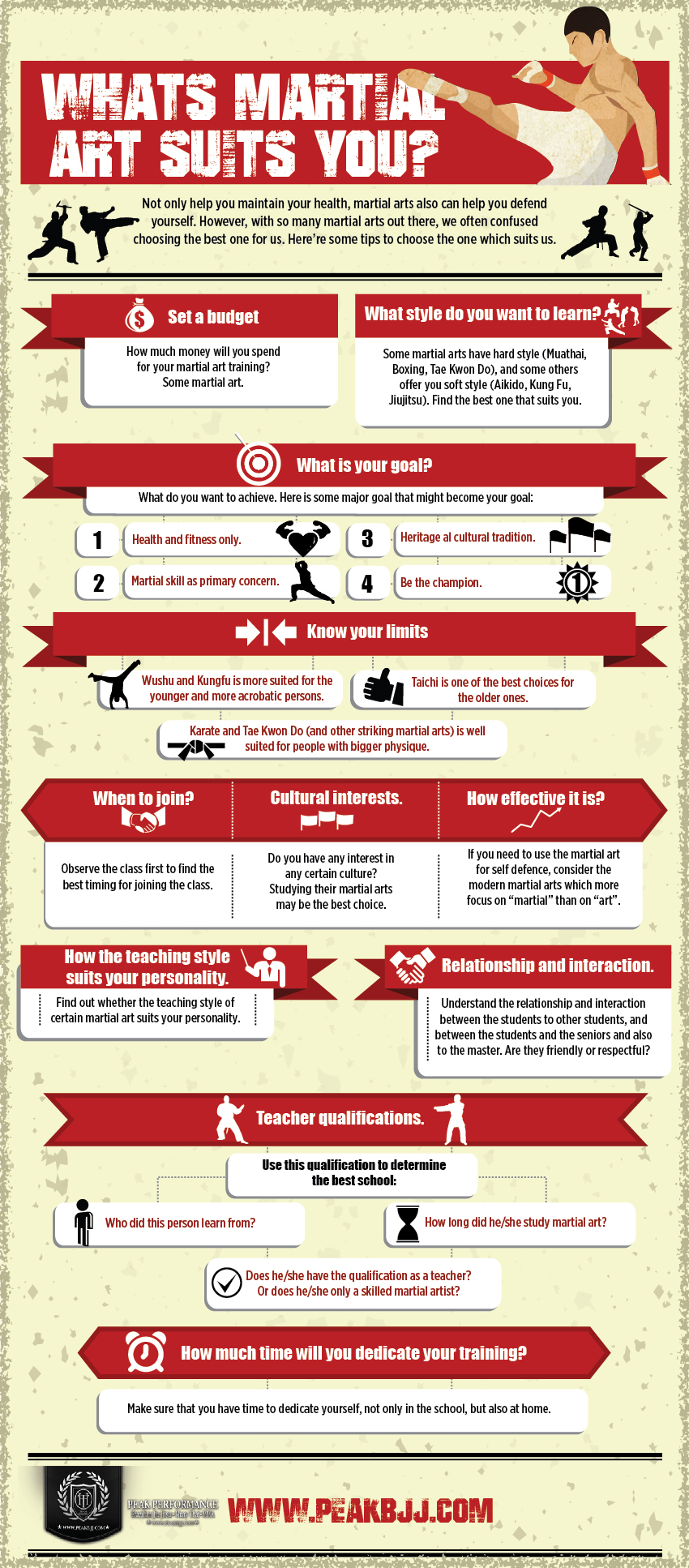The Background And Development Of Martial Arts: From Old Origins To Modern Techniques
The Background And Development Of Martial Arts: From Old Origins To Modern Techniques
Blog Article
Material Create By-Brooks William
Step into the globe of martial arts, where old beginnings and modern-day methods clash in an exciting journey of self-control and self-discovery.
As you look into the history and development of this captivating art form, prepare to be captivated by the cultural influences, technological advancements, and extensive viewpoint that have shaped it over centuries.
From the combat zones of old people to the training premises of today, martial arts have stood the test of time, frequently adapting and growing.
Each strike, each activity, brings with it the weight of many years of custom and wisdom, passed down through generations. This is a story of strength, of warriors that looked for not just physical prowess, but additionally self-confidence and consistency.
Join us on this impressive exploration as we uncover the keys, the legends, and the transformational power of martial arts.
Prepare yourself to be influenced, tested, and permanently altered by the history and development of martial arts.
Social Influences on Martial Arts
As you explore the history and advancement of martial arts, you'll swiftly discover the remarkable methods which cultural impacts have shaped these combat strategies.
From the ancient people of China and India to the much more recent growths in Japan and Brazil, martial arts have been heavily affected by the societies in which they originated.
As an example, Chinese martial arts, such as Kung Fu and Tai Chi, are deeply rooted in the ideology of Taoism and the idea of Yin and Yang.
In contrast, Japanese martial arts, like Karate and Judo, reflect the samurai warrior customs and the values of technique and honor.
In https://www.washingtonpost.com/politics/2022/04/06/cruz-cotton-public-defender/ , Brazilian fighting style, Capoeira, integrates elements of African dancing and songs, mirroring the cultural heritage of African servants in Brazil.
These cultural affects not just give each fighting style its distinct attributes yet additionally offer a deeper understanding of the historic and social contexts in which they progressed.
Technical Advancements and Martial Arts
With the surge of sophisticated weaponry and ingenious training devices, you have actually had the ability to improve your abilities and adjust to the ever-changing combat landscape.
Technological developments have actually transformed the means martial arts are exercised and educated. Virtual reality simulations now enable you to train in realistic fight scenarios without the danger of physical damage. High-speed electronic cameras catch every move, allowing you to examine and perfect your techniques. Wearable tools monitor your heart price, breathing, and muscular tissue activation, offering immediate responses on your efficiency.
Furthermore, the advancement of customized equipment, such as resistance bands and agility ladders, has allowed you to enhance your speed, stamina, and dexterity. These technical innovations have not only made training much more effective yet have additionally pushed the borders of what is feasible in martial arts, permitting you to get to new elevations in your technique.
The Approach and Concepts of Martial Arts
The viewpoint and concepts of martial arts are deeply rooted in shaping your state of mind and instilling technique, emphasis, and respect in your practice.
1. State of mind: Martial Arts educates you to develop a solid and durable way of thinking. It allows you to conquer obstacles both on and off the mat, pushing your limitations and persevering in the face of difficulty.
2. Discipline: Martial Arts demands self-control and self-control. Via normal training and adherence to stringent regulations and methods, you learn to control your impulses and create a strong job principles.
3. Emphasis: Martial Arts requires intense focus and focus. By educating your mind to be existing in the moment, you enhance your capability to respond promptly and efficiently during combat situations.
4. Respect: Martial Arts emphasizes regard for oneself, teachers, training partners, and challengers. It instructs you to value the abilities and experiences of others, fostering a feeling of sociability and sportsmanship.
Final thought
Congratulations on finishing your trip with the exciting world of martial arts! Throughout this exploration, you have seen the rich history and remarkable evolution of these combat practices.
From their old origins to the modern-day techniques we see today, martial arts have been formed by cultural impacts.
see this page of innovation has actually also played a considerable role in transforming the means martial arts are taught and practiced in the present day.
Nonetheless, it is important to keep in mind that martial arts are more than just physical battle. They include extensive approaches and assisting principles that exceed the simple act of combating.
Take a minute to review this anachronistic adventure and value just how the heritage of martial arts continues to thrive in today, going beyond time and borders.
